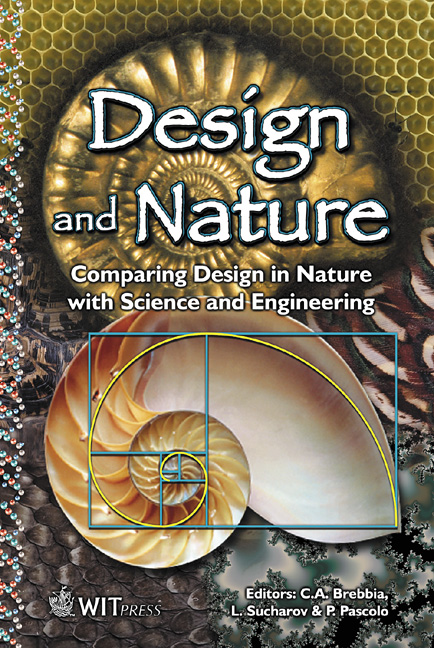Integrating Biological Optimisation Methods Into Engineering Design Process
Price
Free (open access)
Transaction
Volume
57
Pages
Published
2002
Size
582 kb
Paper DOI
10.2495/DN020031
Copyright
WIT Press
Author(s)
C. Mattheck & I. Tesari
Abstract
Integrating biological optimisation methods into engineering design process C. Mattheck & I. Tesari Institute for Materials Research II, Forschungszentrum Karlsruhe, Germany. Abstract Biological structures consist of mechanical load carriers, which are well adapted to their main loading conditions and highly optimised in terms of mechanical strength and minimum weight. A constant stress distribution on the surface of the biological component can be accepted as a significant biological design rule [1]. Based on this condition and by use of the Finite Element Method (FEM) three computer programs have been developed at Forschungszentrum Karlsruhe to transfer these biological optimisation mechanisms to mechanical engineering. The Soft Kill Option (SKO-method) simulates the biological optimisation mechanism of adaptive bone mineralisation to find an optimal design proposal. The Computer Aided Optimization Method (CAO-method) copies the principle of adaptive growth which biological structures, like trees, use to homogenise the stress distribution on their surface. And finally the Computer Aided Internal Optimization (CAIO-method) optimises the use of reinforced composite material due to an optimum fibre arrangement with minimised shear stresses in between the fibres, again mimicking the structure of trees. 1 Introduction The struggle for living space and energy is the motivation force for phenomena in nature which are called biological optimisation. Weak, non-optimised structures have little chance against their well-optimised competitors. The result of this natural selection over millions of years: the designing mechanisms and the structure of each biological load carrier is optimally adapted to its natural load. The biomechanical structures are adapted to the loads they experience by different strategies. First, the trial and error strategy, which creates better designs
Keywords





